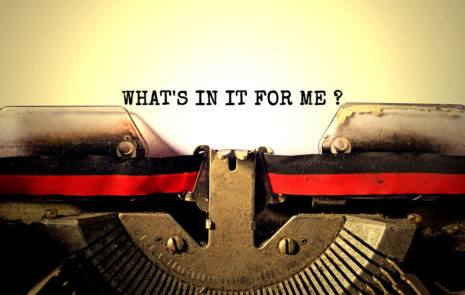
Is your marketing message too generic?
To create a successful marketing message, you need to avoid 6 traps that hurt brands’ messages. Today we’ll discuss trap #2, choosing a generic or plain vanilla message that echoes competitors. (Here’s a blog on how to avoid trap #1.)
Beware of familiar-sounding messages
Brands naturally gravitate toward messages that sound familiar. But in the eyes of customers, your message will either stand out or blend in.
With a differentiating message, your brand stands out. With a safe, generic message, you get lost in a noisy world – missing opportunities to connect with customers who seek something unique.
Test your competitors’ websites to see whether they have generic messaging. Here’s how: look at their home pages while covering up the brand logos.
Can you tell which brand each webpage comes from? If the answer is no, competitors have settled for a generic message. Their brands blend into the landscape. That’s good news for you since it’s easier for you to create a stand-out message when competitors are indistinct.
In the marketplace, customers buy both generic and name-brand products. Businesses price generic products like commodities, based on their objective value. For example, a gallon of gasoline costs about the same everywhere in town.
Brand-name products command higher prices and generate higher profits because they successfully add subjective value to their products. Smart marketers create a distinctive message, tell their story better, and improve the customers’ experience.
Add subjective value to your brand with the right message
Subjective value is the reason people pay $5 or more for a cup of coffee in a charming coffee shop, but only 99 cents for a coffee from the gas station.
How big a role can subjective value play in product pricing? To find out, researchers staged the Significant Objects project. They bought 100 knick-knacks at garage sales and Goodwill stores, spending $129 in all. Here are some of the items they bought:

Then they assigned writers to write a fictional story about each item. They posted these 100 objects for sale on eBay, each with its unique story.
With stories added, these same knick-knacks sold for $3,613. The return on investment came to 2,700% — 28 times the original investment of $129. Proof that you can add subjective value by telling your story well.
With a compelling strategic message, you increase the price people are willing to pay, maximize the subjective value of your brand and reap more profits. Look around town and you’ll find businesses that charge premium prices because they’re good at creating subjective value.
People are willing to pay for authenticity
As the New York Times reported: “For consumers today, food isn’t just about sustenance, it’s about an experience,” said Darren Seifer, a food analyst at NPD Group. “People want a story behind what they buy. That’s why craft beers and small organics are doing so well. They’re selling authenticity.”
Brands that settle for plain vanilla messages are inherently less competitive. They limit their own potential.
Spice up your generic message with stories
To stand out in your market, make sure your message is distinctly, uniquely yours. Spice up your message with differentiation. How? By cultivating meaningful points of difference, collecting customers’ stories, teaching people how to use your products better, and sharing origin stories.
For example, Penzeys Spices adds distinctive stories to each of its products. It differentiates its spices from those you’d buy at a grocery store by consistently sharing four kinds of distinct messages.
Take cinnamon, for example. Penzeys sells sticks, chunks, and ground cinnamon with unique stories attached:
- Origin stories – Penzeys’ cinnamons come from Ceylon, China, Indonesia, and Vietnam. “Vietnamese cinnamon is the strongest, richest, and sweetest cinnamon around.”
- Health stories – Customers tell their own stories on the Penzeys.com website. For instance, a cancer survivor talks about which spices she uses to stay healthy.
- Recipes– Over 200 Penzeys recipes call for cinnamon. Mouth-watering cinnamon rolls, apple pie, Christmas cookies, and French toast. Yum!
- Customer stories – Customers share personal stories about what cooking means to them, using their own words and pictures.
You don’t hear stories like these when you buy cinnamon at the grocery store.
To stand out and maximize your brand value, create unique, compelling messages about your company, your brand, and each product you sell. Use Message Maps to create messages that are consistent and in harmony with each other.
Related Posts
Emotional messages move people
Emotional messages move people. So put emotion into your message map. Home base is the heart and soul of your Message Map That’s why...
Tripp Frohlichstein Interview: Bring Your Message Home
I’m sad to report the death of Tripp Frohlichstein, co-inventor of Message Maps. Tripp taught thousands of people how to tell their story better with a clear, concise,...
Keeping the peace between Marketing and Sales
Many years ago, I came home one evening muttering about a salesperson I worked with. My life partner let me vent for a few...
Are your employees on message?
Employees are your best brand ambassadors. It’s critical that they understand and engage with your message, so they can clearly tell your story. But...





